Photographs: Danish Siddiqui/Reuters Priyanka Singh in New Delhi
Could the land of butter chicken and dosas become overrun by a humble pie made of flour and topped by cheese?
Hard to believe, but the numbers tell a different story. Currently, about 250,000 pizzas are being delivered every day in India and this is expected to double in the next three to four years.
There were 271 pizza outlets in 2004, and today there are 905 of them - a 300 per cent growth in just seven years. Out of the total organised Quick Service Restaurant industry pegged at about Rs 2,700 crore (Rs 27 billion), the pizza industry alone is estimated at Rs 1,300-1,400 crore (Rs 13-14 billion).
...
India set to see a pizza war!
Image: Indians spend just 20 per cent on eating out.Photographs: B Mathur/Reuters
One reason that pizzas will fly out of their ovens here is because Indians spend just 20 per cent on eating out compared to the US, where eating out spends are close to 45-50 per cent.
Plus, the organised food service space in India is just two to three per cent according to Euromonitor vis-a-vis other Asian countries like China and Thailand where it is around 20 per cent.
This underpenetrated market in India makes it the Klondike gold rush of the Pizza world and global players like California-based 'Pizza Kitchen', American pizza chain 'Sbarro', Spanish chain 'Telepizza' and UK-based 'Pizza Express' are all planning to stampede their way into Indian living rooms.
...
India set to see a pizza war!
Image: Carving a business out for themselves is not going to be easy.Photographs: Danish Siddiqui/Reuters
Carving a business out for themselves is not going to be easy. Three fierce global competitors already dominate the landscape and studying their shifting strategies may give these newcomers some valuable tips on what it takes to survive - and thrive - in India.
Those thinking of opening eat-in restaurants may want to think again. US based Papa John's, which entered the country in 2006, has decided on a major shift in strategy - to convert its dine-in outlets to a delivery format, called 'Delcos' since the former was simply not that profitable.
...
India set to see a pizza war!
Image: Pizza Hut is working hard to woo Indians.Photographs: Fred Prouser/Reuters
"Today, it makes more sense to drive business through smaller format of stores," said Sanjay Coutinho, CEO, Papa John's. "These 1100-1200 square feet stores have enough space to use assets optimally. There is a lower rental cost, operational expenditure and less manpower required to run them compared to a dine in space," he adds.
Consequently, Papa John's will open 37 Delcos across India in a year or so, and has set a target of opening 400 of them in the next 4-5 years with an investment of Rs 75 lakhs each.
...
India set to see a pizza war!
Image: Domino's has 439 stores across 100 cities.Photographs: Rob Bodman/Reuters
Another novel idea: A 'buffer' staff able to plunge in and replace exiting ones in a industry plagued by high attrition.
Pizza giant Domino's - which has 439 stores across 100 cities - may enjoy a 54 per cent market share in India, but that's apparently not enough to make it rest on its laurels.
...
India set to see a pizza war!
Image: Basket of customers who could afford to eat its pizzas became much bigger.Photographs: Luke MacGregor/Reuters
One strategy that Domino's has honed over the years is to offer a variety of pizzas at different and inexpensive price points to customers, such as a pizza for Rs 39 in 2007, or the Fun Meal Pizza for four at Rs 45 in 2008.
Suddenly, the basket of customers who could afford to eat its pizzas became much bigger. On average, the company launches three to four products every year to add variety to the menu.
Last quarter they launched 'Three Cheese Pizza' and 'Nutty Choco Lava Cake' which received rave reviews from consumers.
...
India set to see a pizza war!
Photographs: Eric Gaillard/Reuters
"Food fatigue is very high in India. Nobody likes to repeat the same food every time. That is why we keep seven to eight products always in the R&D pipeline," says Harneet Singh Rajpal, VP-marketing, Domino's Pizza India.
It may be strange to ordering a pizza over your computer, but thousands apparently do so with Domino's. Eight per cent of its revenues comes from its online portal and is busy driving trials through Google adverts, digital banner advertisements and search marketing to get people online.
Tier-II and tier-III towns will fuel much of the growth that Dominos seeks in the future.
...
India set to see a pizza war!
Image: Domino's 60 per cent revenue comes from top 10 cities.Photographs: Paulo Whitaker/Reuters
"There are about 426 cities in India with one lakh population which are still untapped and they hold a big future for us. For the last two to three years, we have been entering 15-18 cities every year to achieve a healthy spread," says Rajpal.
Domino's 60 per cent revenue comes from top 10 cities and the rest from smaller ones. At 30-35 per cent market share, 'Pizza Hut' is working hard to woo Indians. Their strategy? Localise flavours.
And while it's hard to imagine eating a pizza that tastes like sev puri or nimbu mirchi, that's exactly what the global giant has deemed necessary to attract local palettes by launching 15 variants of pan pizzas two months ago based on these flavours.
...
India set to see a pizza war!
Image: Owning a pizza chain is not the easiest of things to do in India.Photographs: KCNA/Reuters
These are priced between Rs 135 to Rs 225. From 200 stores today, Pizza Hut hopes to reach up to 500 stores by 2015 which will be in both the casual dining and delivery formats.
Owning a pizza chain is not the easiest of things to do in India. The country has stringent food regulations and procuring food licenses is tough.
The industry is highly fragmented and plagued by poor infrastructure, volatile real estate prices, shortage of skilled and semi-skilled manpower, high attrition rates and no organised supply chain.
Which is why, learning from battle-hardened incumbents may be the best strategy of them all.

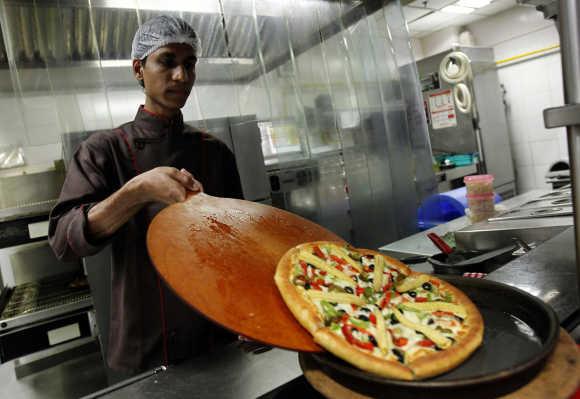


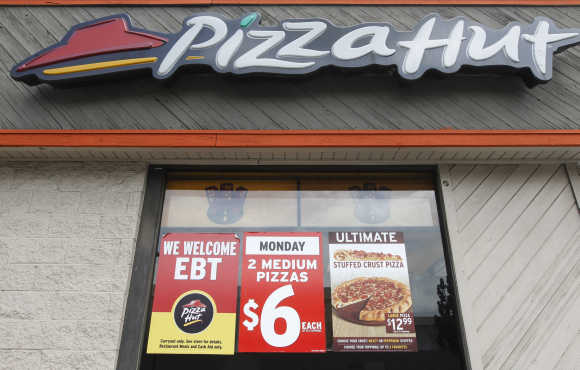
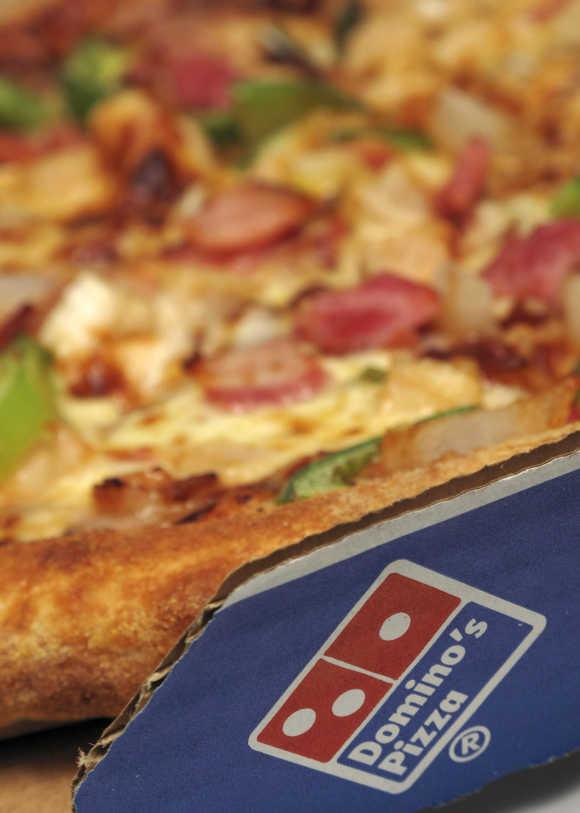
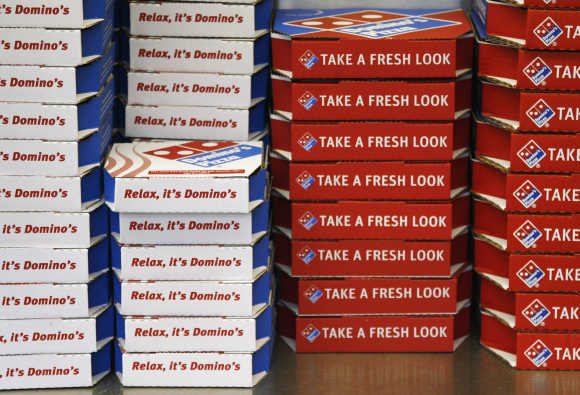

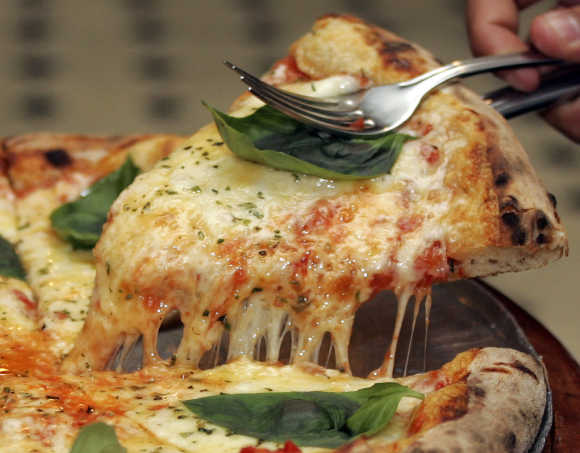


article